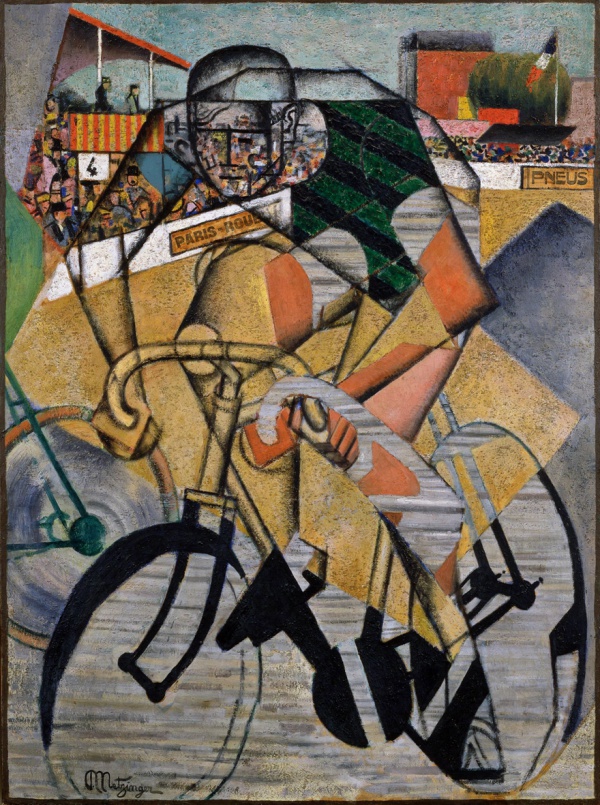Facts About Au Vélodrome
"Au Vélodrome" also known as "At the Cycle-Race Track" and "Le Cycliste" is a remarkable painting by the French artist Jean Metzinger. Capturing the thrilling final moments of the 1912 Paris–Roubaix race, it features the victorious cyclist, Charles Crupelandt. This painting holds a distinctive place in Modernist art as it is the first to depict a specific sporting event and its winner.
The painting made its debut in New York in 1915 and was subsequently acquired by American collector John Quinn in 1916. In 1945, the renowned collector Peggy Guggenheim added it to her collection, and today it proudly hangs in her museum in Venice. In 2012, this masterpiece was the highlight of an exhibition in Venice titled "Cycling, Cubo-Futurism, and the Fourth Dimension."
"At the Cycle-Race Track" is a vertical oil painting on canvas that blends Cubist and Futurist styles. Metzinger skillfully blurs the lines between near and far, creating a dynamic, anti-naturalistic portrayal of a cycling race. His use of multiple perspectives, simultaneity, and an emphasis on the fourth dimension reflects his avant-garde approach to art.
This painting is part of a series by Metzinger focused on the theme of cycling, including "Study for At the Cycle-Race Track" and "Racing Cyclist." Notably, the 1912 painting "Racing Cyclist" set a world record auction price for Metzinger in 2020.
"At the Cycle-Race Track" is celebrated as a masterpiece that merges a love for cycle-racing with a deep exploration of the fourth dimension in art. Its significance lies in its innovative portrayal of a modern sporting event, making it a standout piece in the history of art.

 France
France